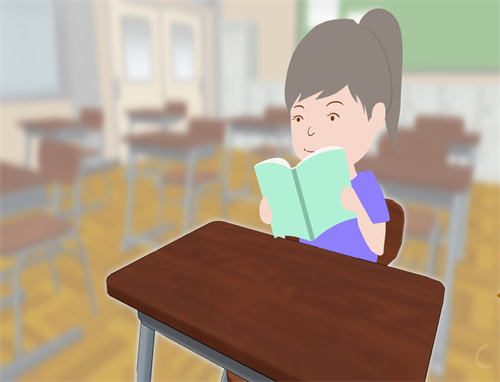考前冲刺阶段虽然不能以阅读练习为主,但大家仍需要花时间练习阅读,把握好这段时间对于冲刺托福阅读高分也是非常有帮助的。今天小编给大家带来托福阅读高分技巧,希望可以帮助到大家,下面小编就和大家分享,来欣赏一下吧。
托福阅读高分丨考前冲刺阶段三步走助力阅读高分
步骤一 每天限时练习
在最后一个的前三个星期,建议大家每天的练习还是只需保持一篇文章左右,但是练习方法要开始有所调整。在做这一篇文章的时候必须要规定时间,也就是二十分钟完成一篇练习,做完对完答案不可以就放一边,而要好好分析,精读一下。
精读的概念就是把文章从头到尾每句话、每个词的意思都能搞清楚,尤其是和题目对应的文章部分。精读完后就要仔细看下做错的题目,总结一下是什么原因导致做错,是单词看不懂,还是句子看不懂,还是说思维方式上有点差距或者某个题型做题方法上还有待改进。
这样做一篇练习然后再精读分析,一定要花一到两个小时,阅读练习的量这一天也够了。只是要每天坚持,都要花一到两个小时去看阅读,培养一种感觉,以这样的托福阅读备考方式积累一个月会把自己的状态调整到最佳的。
步骤二 模考练习
在这样的7天时间里,我们可每天做一套到两套模拟试题。但是,切记一定要在规定时间内完成试题。这种自测的作用就是能体会到考试时时间紧迫的感觉,了解到自己时间把握上的薄弱点,在最后的心态上进行调整。当然做完练习后的主动分析也是必不可少的。
步骤三 考前回顾
与其说是最后冲刺,不如说是最后温习。对于阅读来说,平时的功夫更重要,考前1-2天再多做题也不会在托福阅读能力上有所提高。所以建议大家考前 1-2天可以把以前做过。
以上是小站君为大家整理的托福阅读考前冲刺备考攻略,考前冲刺托福阅读高分,我们必须每天坚持练习,还要在考前一周坚持每天做模考,考前两天做整回顾,希望大家能把握好考前冲刺阶段,让自己阅读水平有新的提升。
托福语法——口语中非谓语动词的使用
口语中很多时候需要非谓语动词的语法运用,但是大多数学生对于这个现象只是听过,但是使用起来却不知所以然。所以我在课上我会跟学生,尤其是基础较好的学生来推荐用这个语法在口语中,这样使口语的句子含金量更高,听起来更加高大上。为了使学生正确使用,我会事先做个统一的讲解,然后再要求学生尽量用在接下的表达中,这样会减少出错的概率,即使出错了,经过我纠正,学生便知道错在哪里。
在英语中,不作句子谓语,而具有除谓语外其他语法功能的动词,叫做非谓语动词.非谓语动词有动词不定式;动名词;现在分词;过去分词。
用法是:
一、动词不定式:(to)+do, 具有名词、形容词、副词的特征。
1. 不定式的形式:
否定式:not + (to) do
(1) 一般式:不定式的一般式所表示的动作与谓语动词动作同时发生或发生在谓语动词动作之后, 例如:I'm glad to meet you.
(2)进行式:不定式的进行式所表示的动作与谓语动词动作同时发生,例如:The boy pretended to be working hard.
(3)完成式:不定式的完成式表示的动作发生在谓语动词动作之前,例如:I regretted to have told a lie.
2.不定式的句法功能:
(1)作主语:
To finish the work in ten minutes is very hard.
动词不定式短语作主语时,常用it作形式主语,例如可用如下形式:
It is very hard to finish the work in ten minutes.
(2)作表语:
Her job is to clean the hall.
(3)作宾语:
常与不定式做宾语连用的动词有:want, hope, wish, offer, fail, plan, learn, pretend, refuse, manage, help, agree, promise, prefer, 如果不定式(宾语)后面有宾语补足语,则用it作形式宾语,真正的宾语(不定式)后置,放在宾语补足语后面,例如:
Marx found it important to study the situation in Russia.
(4)作宾语补足语:
在复合宾语中,动词不定式可充当宾语补足语,如下动词常跟这种复合宾语:want, wish, ask, tell, order, beg, permit, help, advise, persuade, allow, prepare, cause, force, call on, wait for, invite.
(5)作定语:
动词不定式作定语,放在所修饰的名词或代词后.与所修饰名词有如下关系:
①动宾关系:
I have a meeting to attend.
注意:不定式为不及物动词时,所修饰的名词如果是地点、工具等,应有必要的介词,如:
He found a good house to live in.
The child has nothing to worry about.
What did you open it with?
如果不定式修饰time, place, way,可以省略介词:
He has no place to live.
This is the best way to work out this problem.
如果不定式所修饰名词是不定式动作承受者,不定式可用主动式也可用被动式:
Have you got anything to send?
Have you got anything to be sent?
②说明所修饰名词的内容:
We have made a plan to finish the work.
③被修饰名词是不定式逻辑主语:
He is the first to get here.
(6)作状语:
①表目的:
He worked day and night to get the money.
She sold her hair to buy the watch chain.
注意不定式放句首时,逻辑主语与句子主语要一致:
wrong:To save money, every means has been tried.
right:To save money, he has tried every means.
wrong:To learn English well, a dictionary is needed.
right:To learn English well, he needs a dictionary.
②表结果:
He arrived late to find the train gone.
常用only放在不定式前表示强调:
I visited him only to find him out.
③表原因:
They were very sad to hear the news.
④表程度:
It's too dark for us to see anything.
The question is simple for him to answer.
托福语法之四个小词的基本使用方法
MAKE
1. We’ve made significant improvements to our invoicing system.
我们已对原有的发票系统进行了重要的优化。
2. This is an area where we’re finally starting to make real progress.
这是一个我们终于开始 取得切实进展的领域。
3. We’ve made a major breakthrough in AIDS research.
我们在艾滋病研究领域取得了突破性进展。
4. Together we can make a real difference to the way people shop.
只要一起努力,我们可以改变人们的购物习惯。
5. I’d like to make a distinction here between what I call innovative and imitative research.
下面我要给大家介绍下创新研究和模仿研究的区别。
6. We want our clients to make the most of the facilities we can offer them.
我们希望客户可以最大限度的利用我们所提供的设施。
7. After years of research into the technology, the company is finally making an impaction the sector.
经过多年技术研究,这家公司终于在业界有了一定的影响力了。
8. There’s an important point that needs to be made here.
有一个要点需要告诉大家。
9. They’ve really made a mess of the ordering system.
他们的订购系统搞得一团糟。
TAKE
10. Ladies and gentlemen, I’d like to take this opportunity to welcome you all to our company.
女士们先生们,很高兴你们来到我们公司,借此机会我希望表达对你们的欢迎。
11. It’s vitally important that we take action against illegal drug sales.
对非法药品销售采取反制措施是很重要的。
12. I’d like to take a few minutes to talk you through last quarter’s figures.
我会花几分钟时间跟大家过一下上个季度的数据。
13. Of course, it’s the innovative companies that consistently take the lead in cancer research that will benefit from this.
当然,那些一直引领对癌症的研究的 创新公司才会从中受益。
14. It’s all too easy to think that research is all about taking initiatives.
人们很容易就会认为研发只不过是采取主动。
15. Sometimes companies need to take a chance and try something new.
有时候公司应该珍惜机会,主动尝新。
16. The illegal copies of DVDs have really taken a bite out of our profits.
盗版DVD光盘确实大幅削减了我们的利润。
GIVE
17. I’ll begin by giving you an overview of the history of our company.
我准备先来给大家讲一下本公司的发展历程概况。
18. Before I start, I’d like to give you the background to the work we’ve been doing in the last year.
在我开始之前,我想先给大家看一下去年我们所做的工作情况背景。
19. This graph will give you an idea of how far we’ve come in the last few years.
这张图会告诉大家过去几年我们 已经取得了多少进展/做了多少工作。
20. I don’t want to give you the impression that it’s all doom and gloom.
我不想让大家觉得前景黯淡。
21. I could give you hundreds of examples of where this system has worked.
关于这个系统发挥了作用的地方,我可以给大家举很多例子。
DO
22. We’re extremely proud of the research our R & D team has done.
我们为研发小组所取得的成果感到非常骄傲。
23. They have been doing some excellent work on the prototype.
他们为原型的研发做出了杰出贡献。
24. We recently did a survey and the results were astonishing.
最近我们做了一份调查,结果让人触目惊心。
25. You can often do more damage to company profits by expanding too quickly.
扩张速度过快通常可能会给公司利润带来更多损失。
想掌握托福语法让我们从这些基本概念说起
一、托福语法基本结构
英语是一门逐渐发展演变的语言,早在远古时期,英语的结构其实只有以下这两种,即简单句的原始结构。
主+谓+宾; 主+系+表
主语
主语是一个句子所叙述的主体,一般位于句首。在原始的简单句中,主语可由名词、代词、数词、名词化的形容词表示。例如:
During the 1990s, American country music has become more and more popular.(名词)
We often speak English in class.(代词)
One-third of the students in this class are girls.(数词)
The rich should help the poor.(名词化的形容词)
谓语(动词)
谓语说明主语所做的动作或具有的特征和状态。动词在句中作谓语,一般放在主语之后。谓语的构成如下:
1、简单谓语:由一个动词或动词短语构成。如:He practices running every morning.
2、复合谓语:(1)由情态动词或其他助动词加动词原形构成。如:You may keep the book for two weeks. He has caught a bad cold. (2)由系动词加表语构成。如:We are students.
在英语中一个简单句只能有一个谓语动词(知道为什么吗),而且,我们平时学习的时态是针对谓语动词来说。如果以do为例,do, did ,have done, will do, had done, is/am/are doing, was/were doing, would do。在简单句中,谓语动词和主语是句子的核心,不可以随意删掉。
宾语
宾语表示动作的对象或承受者,一般位于及物动词和介词后面。例如:
They went to see an exhibition yesterday.(名词)
The heavy rain prevented me from coming to school on time.(代词)
How many dictionaries do you have? I have five.(数词)
They helped the old with their housework yesterday.(名词化形容词)
表语
表语用以说明主语的身份、特征和状态,它一般位于系动词(如be, become, get, look, grow, turn, seem等)之后。表语一般由名词、代词、形容词、分词、数词。
Our teacher of English is an American.(名词)
Is it yours?(代词)
The weather has turned cold.(形容词)
The speech is exciting.(分词)
Three times seven is twenty one?(数词)
二、托福语法定状修饰
在简单句中,只要满足上面两种结构,就可以把一件简单的事说清楚,但随着英语的逐渐演变,又演变出两种新的成分,可以对句子进行修饰和补充,我们称之为定语和状语。在托福阅读中我们遇到的多是长句和语言成分充分的句子,很少出现单纯的简单句,所以对如下语法内容要掌握。
定语
修饰名词或代词的词为定语。定语可由以下等成分表示:(在汉语里,定语可以翻译成…的)
Guilin is a beautiful city.(形容词)
China is a developing country; America is a developed country.(分词)
There are thirty women teachers is our school.(名词)
His rapid progress in English made us surprised.(代词)
状语
修饰动词、形容词、副词或整个句子,说明动作或状态特征的句子成分,叫做状语。状语在高中是一个相对抽象的概念,在简单句中状语一般由副词充当,修饰动词和形容词为主,除此之外,介词短语在简单句中也喜欢扮演状语的作用,这个语法点主要存在于我们的语法填空和短文改错中。
三、“高阶”句式
随着英语的逐渐演变,在某些简单句中,相对应的句子成分不能用单词进行描述。
主(多喝水)+ is great for your health.
I love 宾(踢足球).
My hobby is 表(玩电脑游戏).
I has bought a book(王先生写的)等等。
我们发现,在上面的例子里,没有办法用一个单词进行描述,所以在演变的过程中,出来一个新的语法成分,叫做非谓语动词短语(to do ,doing, done,注意done与did的区别)
1、只加不定式作宾语的动词:plan, demand, promise, help, prepare, decide, refuse, choose, wish/hope, expect, fail, pretend, manage, determine, beg, arrange, threaten, claim, hesitate, happen等。
2、只加动名词作宾语的动词:admit, avoid, consider, escape, imagine, mind, miss, practice, suggest, advise, allow, permit, risk, prevent, resist, deny, forbid,advocate, forgive, acknowledge, postpone, delay, fancy, recall,finish/complete, acknowledge等
3、下面这些短语只能加doing作宾语:be addicted to, be accustomed to, get down to, lead to ,contribute to, devote oneself to , object to, look forward to, owing to, become/get/be used to, pay attention to等等。
4、既可以加to do, 也可以加doing的动词,且意思很相近的动词:intend, attempt, continue, begin, start等。
5、接to do 和doing 作宾语意义差别很大的动词:mean, forget, try, go on等。
To swim in the river is a great pleasure.(不定式)
Smoking does harm to the health.(动名词)
He pretended not to see me.(不定式短语)
I enjoy listening to popular music.(动名词短语)
Our monitor is always the first to enter the classroom.(不定式短语)
The boy playing football(动名词短语) is my brother
The dog killed by a car(过去分词短语) is very fierce.
注意:非谓语动词短语作定语时,要放在修饰词的后面,形容词做定语时,放在修饰词的前面。
非谓语动词短语是一个全新的语法概念,因为与我们汉语语法思维差别很大,所以同学们对此不是很理解,所以在学习时需要转换下思维。它的出现解决了英语单词扮演不了的功能,英语进入了一个崭新的发展时期。
从句的到来,随着英语的进一步发展,非谓语动词短语的功能逐渐衰退。
主(我们所需要的东西)+is +much knowledge I know宾(Tom 什么时候回来)
My question is (是否我们需要好好学英语) I love a place(有很多鲜花和绿树的地方)
我们会发现,这时出现了一个句子来扮演成分的功能,所以也就有日后大家学习的宾语从句,主语从句,表语从句,定语从句相关概念了。
因此,希望今后同学们在托福备考的过程中,要树立以句子为核心的观念,不管这个句子多么复杂,它都是由简单句演变过来的。把长难句一点点拆解为简单句来理解,托福考试就没有那么困难了!当然,作用最明显的肯定还是阅读和写作了。
考前冲刺阶段三步走助力托福阅读高分
上一篇:托福阅读高分攻略分享






